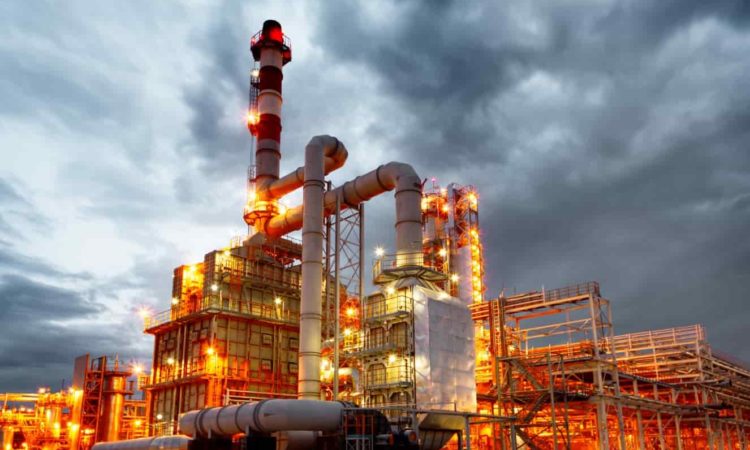The Only Guide for Roar Solutions
Table of ContentsRoar Solutions Can Be Fun For AnyoneSome Ideas on Roar Solutions You Should KnowRoar Solutions Can Be Fun For Anyone
In order to safeguard installments from a potential explosion an approach of evaluating and classifying a possibly hazardous area is needed. The purpose of this is to guarantee the correct option and installation of equipment to eventually protect against an explosion and to make sure safety and security of life.

No devices must be set up where the surface area temperature level of the tools is higher than the ignition temperature of the offered hazard. Below are some typical dirt hazardous and their minimum ignition temperature level. Coal Dirt 380C 225C Polythene 420C (melts) Methyl Cellulose 420C 320C Starch 460C 435C Flour 490C 340C Sugar 490C 460C Grain Dust 510C 300C Phenolic Material 530C > 450C Aluminium 590C > 450C PVC 700C > 450C Residue 810C 570C The likelihood of the risk being existing in a focus high enough to trigger an ignition will certainly differ from area to location.
In order to identify this threat an installation is divided into locations of threat relying on the amount of time the harmful exists. These locations are referred to as Zones. For gases and vapours and dusts and fibres there are three zones. Area 0 Area 20 A dangerous ambience is very most likely to be existing and might exist for extended periods of time (> 1000 hours per year) and even continuously Area 1 Area 21 An unsafe atmosphere is possible but unlikely to be present for long periods of time (> 10 450 C [842 F] A classification of T6 implies the minimum ignition temperature is > 85 C [185 F] Harmful area electrical devices perhaps developed for use in higher ambient temperatures. This would certainly showed on the ranking plate e.g. EExe II C T3 Ta + 60C( This means at 60C ambient T3 will certainly not be gone beyond) T1 T1, T2, T3, T4, T5, T6 T2 T2, T3, T4, T5, T6 T3 T3, T4, T5, T6 T4 T4, T5, T6 T5 T5, T6 T6 T6 A T Course score of T1 indicates the maximum surface temperature level created by the instrument at 40 C is 450 C. Presuming the connected T Course and Temperature level score for the tools are appropriate for the location, you can constantly utilize an instrument with a more stringent Department score than required for the location. There isn't a clear solution to this inquiry regrettably. It actually does depend upon the type of equipment and what repairs require to be executed. Equipment with details examination procedures that can not be done in the field in order to achieve/maintain 3rd party rating. Must return to the factory if it is before the equipment's solution. Field Fixing By Authorised Worker: Complex screening may not be required nonetheless particular treatments may need to be adhered to in order for the equipment to maintain its third party score. Authorised workers must be used to carry out the job appropriately Repair service should be a like for like substitute. New component need to be thought about as a direct replacement calling for no special screening of the devices after the fixing is total. Each piece of devices with a dangerous rating should be reviewed separately. These are outlined at a high degree listed below, but also for even more comprehensive details, please refer directly to the standards.
Some Ideas on Roar Solutions You Need To Know
The devices register is a comprehensive data source of equipment records that includes a minimum set of areas to recognize each thing's area, technical specifications, Ex lover classification, age, and ecological information. This info is important for tracking and managing the tools properly within harmful areas. In contrast, for routine or RBI tasting examinations, the quality will certainly be a combination of In-depth and Close assessments. The ratio of Detailed to Shut examinations will be figured out by the Devices Risk, which is assessed based upon ignition danger (the possibility of a resource of ignition versus the likelihood of a flammable ambience )and the harmful area category
( Zone 0, 1, or 2). This variant will likewise affect the resourcing needs for work prep work. Once Whole lots are defined, you can create sampling strategies based on the sample dimension of each Lot, which describes the variety of random tools products to be examined. To establish the needed example size, two facets need to be reviewed: the size of the Great deal and the group of assessment, which shows the level of initiative that ought to be used( reduced, regular, or enhanced )to the assessment of the Whole lot. By combining the group of inspection with the Great deal dimension, you can after that develop the ideal denial requirements for an example, meaning the allowable variety of defective things found within that example. For even more information on this procedure, please published here refer to the Power Institute Guidelines. The IEC 60079 common suggests that the optimum period in between assessments must not go beyond 3 years. EEHA inspections will likewise be carried out outside of RBI projects as part of arranged maintenance and devices overhauls or fixings. These inspections can be attributed toward the RBI example sizes within the affected Great deals. EEHA assessments are performed to identify faults in electric tools. A heavy racking up system is important, as a single piece of devices may have several mistakes, each with differing degrees of ignition threat. If the mixed score of both evaluations is much less than two times the fault score, the Great deal is considered acceptable. If the Lot is still thought about inappropriate, it should go through a complete examination or validation, which might set off stricter inspection methods. Accepted Lot: The sources of any kind of mistakes are identified. If a common failing setting is discovered, extra equipment might need assessment and repair work. Faults are identified by extent( Security, Integrity, House cleaning ), guaranteeing that immediate concerns are examined and dealt with quickly to alleviate any kind of effect on safety or operations. The EEHA database should track and record the lifecycle of mistakes in addition to the corrective activities taken. Applying a robust Risk-Based Examination( RBI )approach is important for guaranteeing conformity and security in taking care of Electrical Devices in Hazardous Areas( EEHA) (eeha). Automated Mistake Scoring and Lifecycle Administration: Effortlessly handle faults and track their lifecycle to boost assessment accuracy. The intro of this support for risk-based examination even more strengthens Inspectivity's setting as a best-in-class remedy for regulatory compliance, along with for any kind of asset-centric evaluation use instance. If you are interested in discovering more, we invite you to request a presentation and uncover how our service can transform your EEHA administration procedures.
Unknown Facts About Roar Solutions

In terms of explosive risk, a dangerous area is an environment in which an explosive atmosphere is existing (or might be expected to be present) in quantities that call for unique preventative measures for the construction, installation and use tools. Roar Solutions. In this write-up we check out the challenges faced in the office, the threat control procedures, and the required competencies to function safely
It is a consequence of modern-day life that we produce, store or handle a series of gases or liquids that are deemed combustible, and a series of dirts that are regarded combustible. These materials can, in specific conditions, create explosive atmospheres and these can have significant and heartbreaking repercussions. A lot of us know with the fire triangle eliminate any among the three aspects and the fire can not occur, yet what does this mean in the context of dangerous locations? When breaking this down right into its simplest terms it is basically: a combination of a particular amount of launch or leakage of a specific material or material, combining with ambient oxygen, and the visibility of a source of ignition.
In a lot of circumstances, we can do little about the levels of oxygen airborne, yet we can have significant influence on sources of ignition, as an example electric equipment. Dangerous locations are recorded on the hazardous area classification illustration and are recognized on-site by the triangular "EX" sign. Right here, among various other vital information, zones are split right into 3 kinds relying on the hazard, the probability and period that an eruptive ambience will certainly exist; Area 0 or 20 is regarded one of the most unsafe and Area 2 or 22 is deemed the least.
Comments on “Roar Solutions Can Be Fun For Anyone”